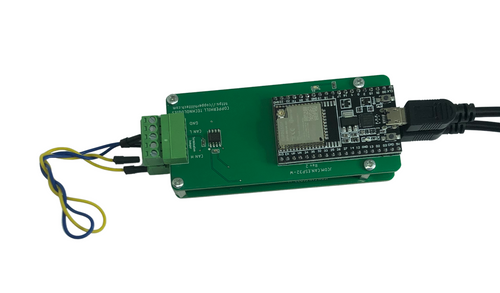Blog
Recent Posts
Comparing SAE J1939 Baud Rates: Evaluating 250k vs. 500k for Modern Vehicle Networks
Posted by on
 For years, SAE J1939 has been synonymous with heavy-duty vehicle networking, and 250k baud has been the de facto standard. But as vehicles grow more connected and data-intensive—think emissions controls, advanced diagnostics, telematics, and electrification—the question arises: is 250k still enough?
For years, SAE J1939 has been synonymous with heavy-duty vehicle networking, and 250k baud has been the de facto standard. But as vehicles grow more connected and data-intensive—think emissions controls, advanced diagnostics, telematics, and electrification—the question arises: is 250k still enough?
The recent discussion around adding a 500k baud rate to the J1939 standard aims to answer that very question.
The Case for 500k Baud
At 250k baud, J1939 provides reliability and robustness in noisy environments, which is why it has been trusted in trucking, agriculture, and construction for decades. However, as electronic control units (ECUs) multiply and applications demand faster updates, bandwidth pressure becomes a real bottleneck.
Moving to 500k baud essentially doubles the available bandwidth, reducing latency and allowing more messages per second without overloading the bus. This makes it particularly relevant for modern vehicles where real-time data exchange is becoming mission-critical.
Connectors and Hardware Updates
A faster baud rate isn’t just about firmware updates—it also affects the physical layer. Newer 9-pin Deutsch connectors (sometimes referred to as “Type II”) have been introduced to help distinguish 500k-capable systems from legacy 250k installations. These connectors ensure proper compatibility while reducing the risk of mismatched connections in mixed environments.
Consequences for System Design
Adopting 500k baud brings both opportunities and challenges:
-
Performance Gains: Higher throughput for diagnostics, control, and logging.
-
Backward Compatibility: Many systems will need dual-support (250k and 500k), especially during transition phases.
-
Tooling and Testing: Diagnostic tools, CAN gateways, and sniffers must be updated to handle both rates.
-
Standards Alignment: Engineers will need to consider how 500k interacts with higher-speed CAN FD and Ethernet-based standards already emerging in the industry.
Neutral Ground: 250k vs. 500k
| Feature | 250k Baud (Traditional) | 500k Baud (New Option) |
|---|---|---|
| Bandwidth | Baseline | ~2x higher |
| Latency | Moderate | Lower |
| Reliability | Proven in harsh environments | Still robust, but less field history |
| Compatibility | Universal | Requires updated connectors & tools |
Conclusion
The move to 500k baud doesn’t replace 250k—it complements it. Legacy systems will continue to operate at 250k, but 500k gives engineers more flexibility to design for the future without abandoning the rugged reliability J1939 is known for.
If you’re interested in a deeper technical dive into the necessity, connectors, and consequences of adding 500k baud, check out our full report.
For more details, see our post SAE J1939 Baud Rate Options: A Technical Comparison of 250k and 500k...
 SAE J1939 Starter Kit And Network Simulator
SAE J1939 Starter Kit And Network Simulator
Our JCOM.J1939 Starter Kit and Network Simulator is built for both seasoned engineers and beginners who want to explore SAE J1939 data communication without relying on a real-world vehicle network such as a diesel engine.
To create a functioning network, you always need at least two nodes. This requirement is particularly important with CAN/J1939, where a single CAN controller will shut down if it transmits data but receives no response.
That’s why our Starter Kit includes two fully functional J1939 nodes. At its core is the JCOM.J1939.USB, an SAE J1939 ECU Simulator Board with a USB interface. Together, these nodes provide a self-contained test environment where you can send, receive, and analyze J1939 messages, experiment with network traffic, and develop applications — all without connecting to an actual engine or vehicle system. More information...
 Loading... Please wait...
Loading... Please wait...
